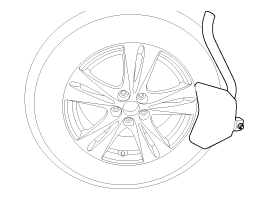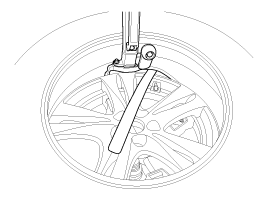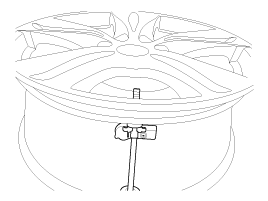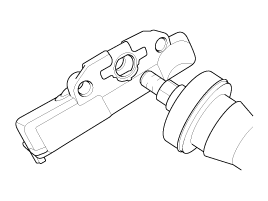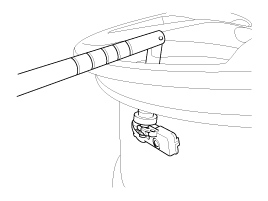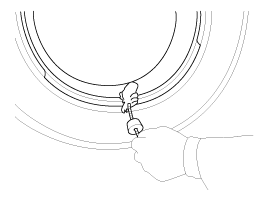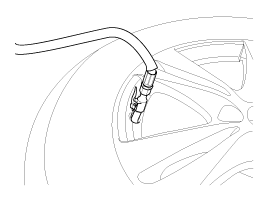 Hyundai Veloster: TPMS Sensor. Repair procedures
Hyundai Veloster 2011-2017 Service Manual / Suspension System / Tire Pressure Monitoring System / TPMS Sensor. Repair procedures
Hyundai Veloster: TPMS Sensor. Repair procedures
Hyundai Veloster 2011-2017 Service Manual / Suspension System / Tire Pressure Monitoring System / TPMS Sensor. Repair procedures
Replacement
| 1. |
Remove the valve core and deflate the tire.
|
| 2. |
Remove the side of the tire bead area from the wheel using tire
changing machine .
|
| 3. |
Rotate the wheel clockwise.
|
| 4. |
Loosen the nut and then remove the TPMS sensor.
|
| 5. |
Remove the valve from the rim by pressing the tool.
|
| 6. |
Assemble a new sanp-in valve to the sensor body.(Go to the number
8 if it uses the unifed part both a valve and a sensor body.)
|
| 7. |
Assemble by using the new screw.
|
| 8. |
Lubricate and place the valve in the valve hole.
|
| 9. |
Using the standard valve stem puller tool, pull the valve stem
straight through the valve hole.andstop pulling when the indicator ring
on the valve has passed completely through the valve hole.
|
| 10. |
Apply tire soap or lubrication to the top and bottom tire beads.
|
| 11. |
To fit the bottom bead, position the sensor at the 5 o’clock position
relative to the head on the tire changing machine
|
| 12. |
Place the tire on the rim so the bottom bead touches the edge
of the rim after the sensor (@6 o’clock). Rotate the rim clockwise,
and push down on the tire at the 3 o’clock position to fit bottom bead.
|
| 13. |
After bottom bead is on tire, rotate the rim until the sensor
is at the 5 o’clock position relative to the head on the tire changing
machine. Push down on the tire at the 3 o’clock position and rotate
the rim clockwise to fit the top bead.
|
| 14. |
Inflate the tire until both beads seat.
|
| 15. |
In the case of TPMS sensor failure, TPMS sensor needs learning.
Faulty sensor is replaced new units, conduct learning of TPMS sensors.
|
Diagnosis procedure by using diagnostic device
| 1. |
Connect self-diagnosis connector(16pins) located in the lower
of driver side crash pad to self-diagnosis device, and then turn the
self-diagnosis device after key is ON.
|
| 2. |
Select the "vehicle model" and "TPMS" on GDS vehicle selection
screen, then select OK.
|
[Register Sensor initialization]
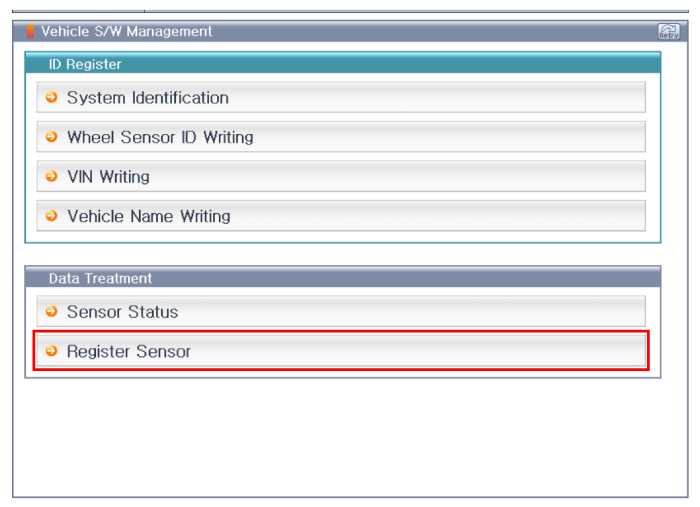
[Register Sensor function description]
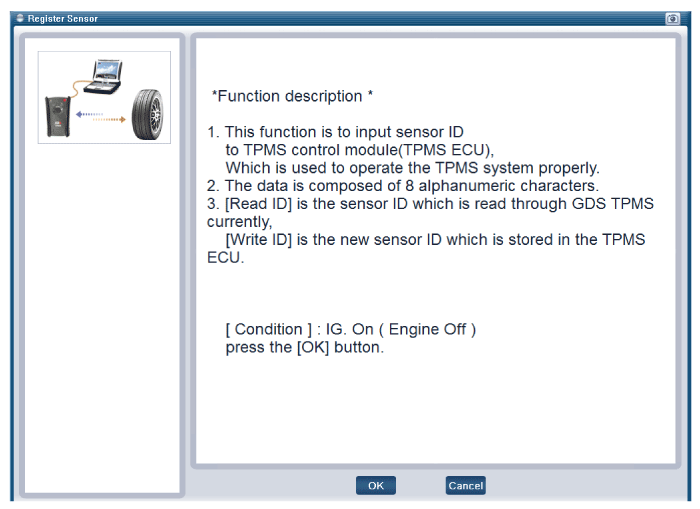
[Preparation phase sensor measurements]
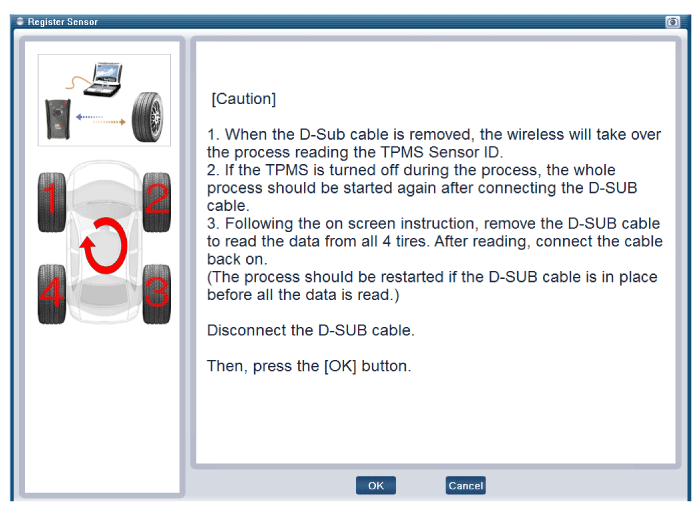
[Sensor register method 1]
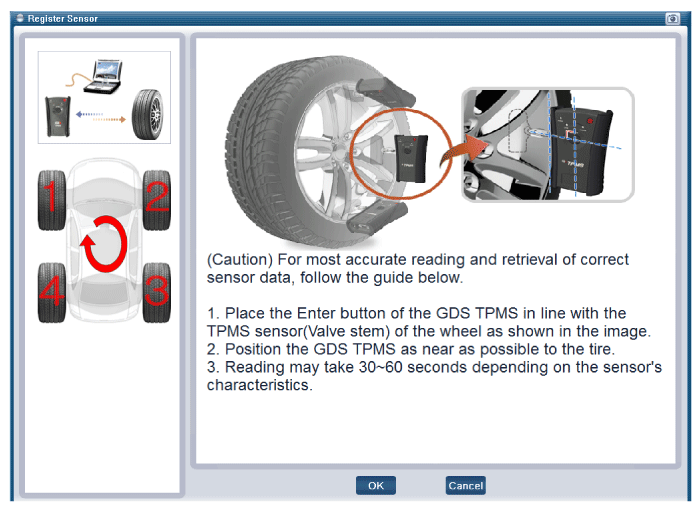
[Sensor register method 2]

[Sensor register method 3]
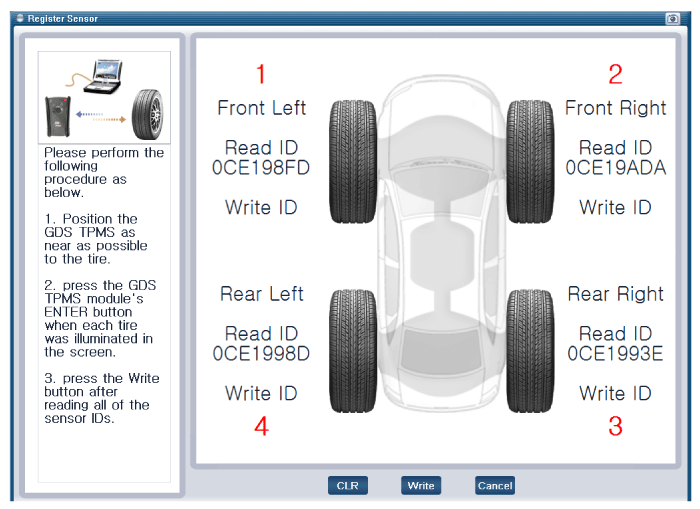
[Sensor register method 4]

[Sensor register method 5]
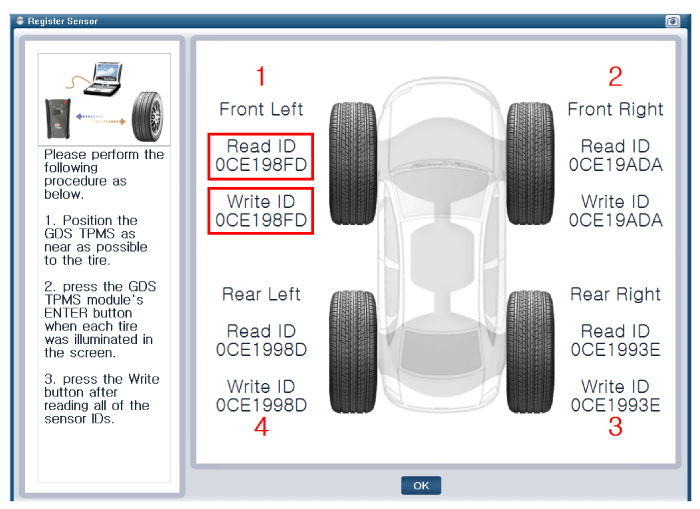
|
[Sensor Status initialization]
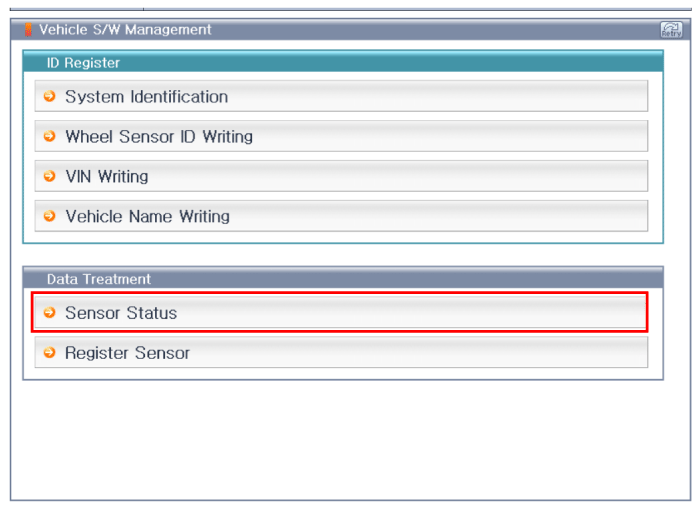
[Sensor function description]
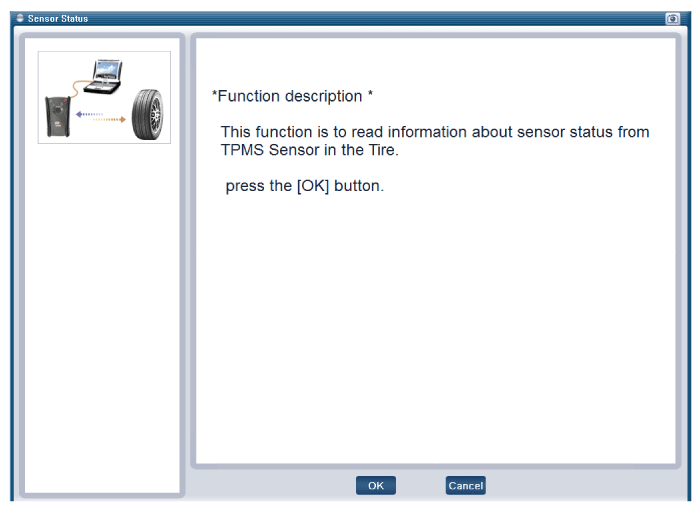
[Preparation phase sensor measurements]

|
[Sensor measurements 1]
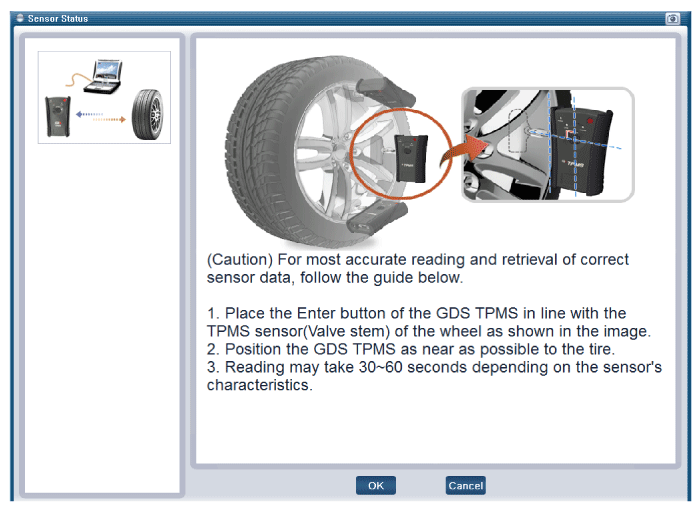
[Sensor measurements 2]
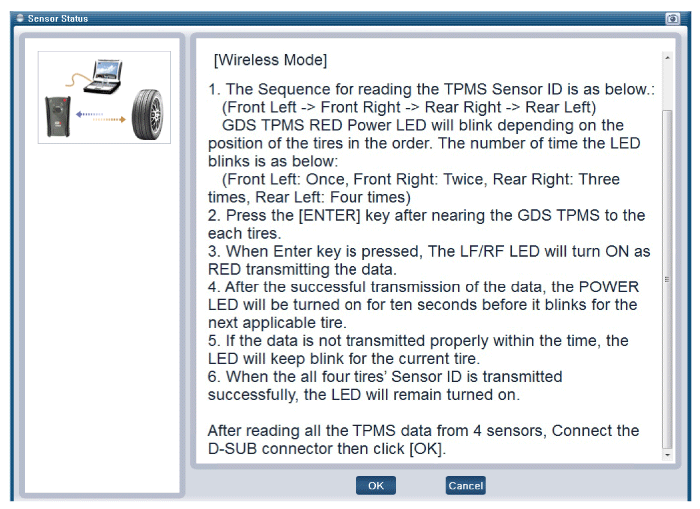
[Sensor Status]

|
Replacement
| Repair tire after using the Tire Mobility Kit (TMK) |
When the TPMS warning lamp OFF
| 1. |
Remove the TMK repaired tire, wheel and TPMS sensor.
(Refer to "Tire removal")
|
| 2. |
Remove the sealant on the wheel and TPMS sensor (A) completely.
|
| 3. |
Install the TPMS sensor to the new tire.
|
| 4. |
Check that the normal operation of TPMS system.
|
When the TPMS warning lamp ON
| 1. |
Remove the TMK repaired tire, wheel and TPMS sensor.
(Refer to "Tire removal")
|
| 2. |
Remove the sealant on the wheel and TPMS sensor (A) completely.
|
| 3. |
Install the TPMS sensor to the new tire.
|
| 4. |
Check the tire pressure using the electrical tire pressure gauge.
|
| 5. |
Check the tire pressure of TPMS sensor using the GDS
|
| 6. |
If the difference between two checked pressures in the above is
not more than 2 psi, TPMS sensor is normal. Reinstall it to new tire.
|
| 7. |
If the difference between two checked pressures in the above is
more than 2 psi, TPMS sensor is abnormal. Install new TPMS sensor to
new tire.
|
| 8. |
Check that the normal operation of TPMS system.
|
 TPMS Sensor. Description and Operation
TPMS Sensor. Description and Operation
Description
Function
1.
Tire pressure, Temperature, Acceleration, Battery voltage measurement
2.
RF (Radio Frequency) Transmit (Tire ...
 TPMS Receiver. Description and Operation
TPMS Receiver. Description and Operation
Description
Function
1.
LED control, Vehicle Speed signal enter, Diagnostic function (via
HS CAN Communications)
2.
Self Diagnos ...
See also:
Specifications
Specification
Item
Resistance (Ω)
Driver Airbag (DAB)
1.7 ~ 2.3
Passenger Airbag (PAB)
1.7 ~ 2.3
...
Specifications
Specifications
Items
Specification
Hood
Type
Rear hinged, front opening type
Front Door
Construction
...
Wipers and washers
A :Wiper speed control (front) · 2 – High wiper speed · 1 – Low wiper speed ·
--- – Intermittent wipe · AUTO* – Automatic control wipe · O – Off ·
– Single wipe
B : Intermitte ...
Categories
- Hyundai Veloster Manuals Home
- Hyundai Veloster 2010-2017 Owner's Manual
- Hyundai Veloster 2010-2017 Service Manual

